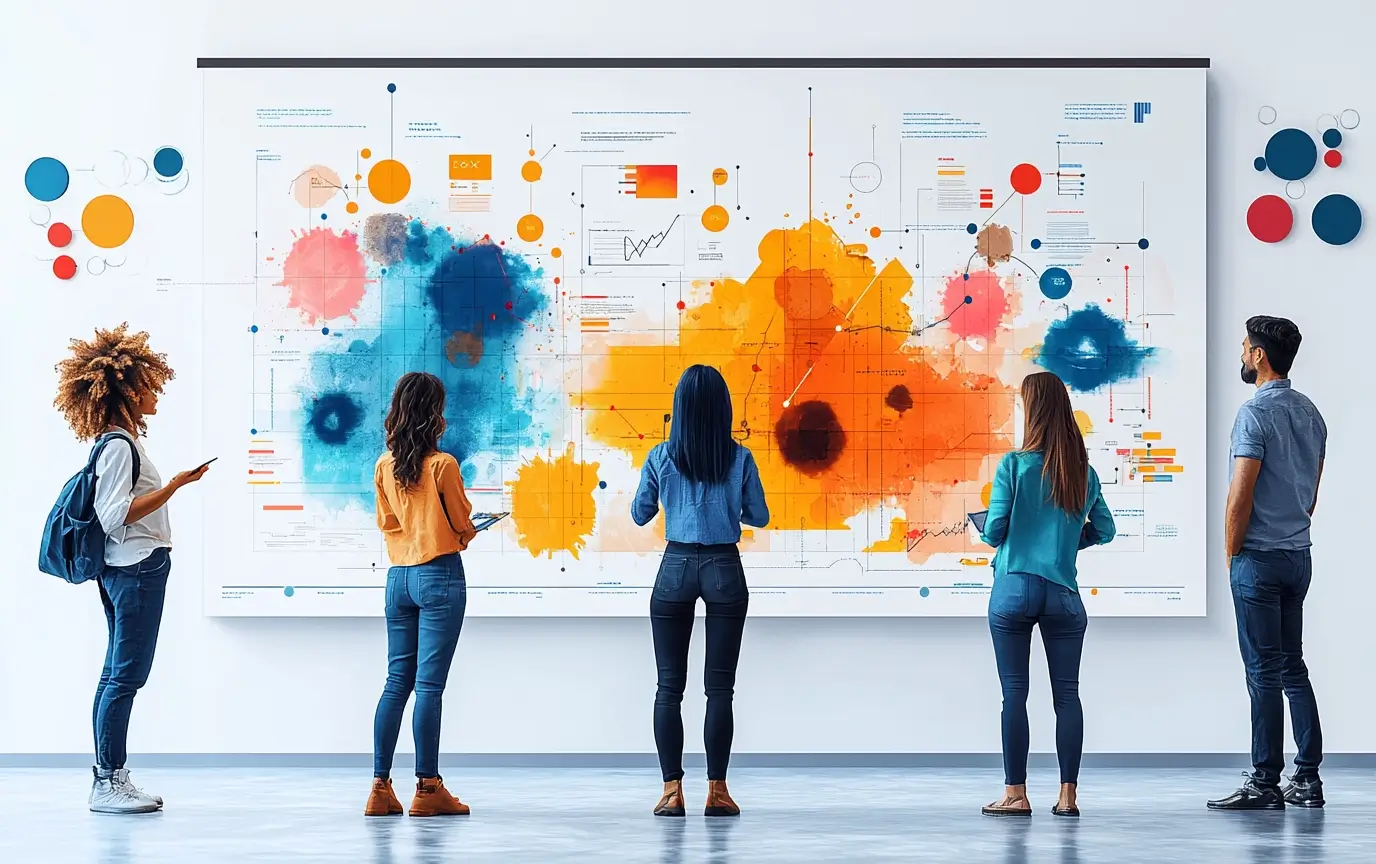Identity Protection: Maintaining Beliefs to Protect Identity

1. Introduction to Identity Protection
Imagine a loyal customer who has always believed in the eco-friendly mission of a brand they love. When they hear that the brand might be involved in an environmental scandal, they dismiss the news as exaggerated or untrue. This is a prime example of Identity Protection.
Identity Protection is a cognitive bias where individuals resist information that contradicts their deeply held beliefs, particularly when those beliefs are tied to their identity. This bias can significantly impact customer behavior, as customers may reject or reinterpret information that conflicts with their self-perception or the identity they associate with certain brands. Understanding Identity Protection is crucial in enhancing Customer Experience (CX) as it helps businesses navigate how customers process information that may challenge their loyalty or perception of a brand.
2. Understanding the Bias
- Explanation: Identity Protection occurs when individuals reject or reinterpret information that conflicts with their identity or core beliefs. This bias is particularly strong when the information challenges a belief that is closely tied to the individual’s sense of self or group identity.
- Psychological Mechanisms: This bias is driven by the human need to maintain a consistent and positive self-image. When confronted with information that threatens this image, individuals may engage in denial, rationalization, or reinterpretation to protect their identity.
- Impact on Customer Behavior and Decision-Making: Customers influenced by Identity Protection may disregard negative information about a brand they identify with or hold onto their existing beliefs even in the face of contradictory evidence.
Impact on CX: Identity Protection can significantly impact CX by shaping how customers perceive and engage with products or services, particularly when their identity is closely tied to a brand or cause.
- Example 1: A customer who strongly identifies with a brand known for its sustainability efforts may dismiss reports of environmental misconduct, choosing to believe that the reports are false or misleading.
- Example 2: A consumer may continue to support a company despite evidence of unethical practices, rationalizing the behavior as an exception rather than the norm.
Impact on Marketing: In marketing, Identity Protection can be leveraged by reinforcing positive identity associations and addressing potential conflicts in a way that aligns with the customer’s self-perception, helping to maintain brand loyalty.
- Example 1: A marketing campaign that emphasizes the alignment between a brand’s values and the customer’s identity can strengthen the customer’s connection to the brand, making them more likely to dismiss negative information.
- Example 2: Addressing potential conflicts or controversies head-on, but framing them in a way that reassures customers of the brand’s commitment to their shared values, can help mitigate the effects of Identity Protection.
3. How to Identify Identity Protection
To identify the impact of Identity Protection, businesses should track and analyze customer feedback, surveys, and behavior related to brand loyalty and responses to negative information, and implement A/B testing to understand how different approaches to messaging and identity reinforcement influence customer perceptions and loyalty.
- Surveys and Feedback Analysis: Conduct surveys asking customers about their reactions to negative information about a brand they strongly identify with. For example:
- "How do you react when you hear negative information about a brand you love? Do you believe it, dismiss it, or look for more information?"
- "How important is it for you that the brands you support align with your personal values?"
- Observations: Observe customer interactions and feedback to identify patterns where Identity Protection influences behavior, particularly in situations where customers are confronted with information that challenges their beliefs about a brand.
- Behavior Tracking: Use analytics to track customer behavior and identify trends where identity-related factors drive engagement, conversions, or loyalty. Monitor metrics such as brand loyalty scores, customer responses to negative news, and feedback related to identity alignment.
- A/B Testing: Implement A/B testing to tailor strategies that address Identity Protection. For example:
- Identity Reinforcement: Test different messaging strategies that reinforce the alignment between the brand and the customer’s identity, understanding how these influence customer loyalty and perception.
- Conflict Resolution: Test the impact of addressing negative information or controversies directly, but framing them in a way that reassures customers of the brand’s commitment to their shared values.
4. The Impact of Identity Protection on the Customer Journey
- Research Stage: During the research stage, customers’ identity-related beliefs can heavily influence their initial perceptions and decision-making process, often leading them to favor products or services that align with their values and dismiss those that don’t.
- Exploration Stage: In this stage, Identity Protection can guide customers as they evaluate options, with those that align with their identity standing out as more appealing, even if other options might offer better value or quality.
- Selection Stage: During the selection phase, customers may make their final decision based on the brand’s alignment with their identity, choosing options that reinforce their self-perception, even in the face of negative information.
- Loyalty Stage: Post-purchase, Identity Protection can influence customer satisfaction and loyalty, as customers who feel that a brand aligns with their identity are more likely to remain loyal, even when confronted with negative information.
5. Challenges Identity Protection Can Help Overcome
- Enhancing Brand Loyalty: Understanding Identity Protection helps businesses create strategies that strengthen the bond between a brand and its customers’ identities, leading to stronger loyalty and reduced attrition.
- Improving Crisis Management: By recognizing this bias, businesses can develop marketing materials and customer experiences that address potential conflicts or controversies in a way that reassures customers of the brand’s commitment to their shared values, reducing the impact of negative information.
- Building Brand Advocacy: Leveraging Identity Protection can build advocacy by ensuring that customers feel that the brand aligns with their identity, leading to stronger relationships and word-of-mouth promotion.
- Increasing Customer Retention: Creating experiences that reinforce the alignment between the brand and the customer’s identity can enhance retention, as customers are less likely to switch to competitors when they feel a strong identity connection.
6. Other Biases That Identity Protection Can Work With or Help Overcome
- Enhancing:
- Confirmation Bias: Identity Protection can enhance confirmation bias, where customers seek out information that aligns with their beliefs and dismiss information that contradicts their identity.
- Status Quo Bias: Customers may use Identity Protection to justify their loyalty to a brand, resisting changes or new information that challenge their existing beliefs or practices.
- Helping Overcome:
- Cognitive Dissonance: By reinforcing the alignment between the brand and the customer’s identity, businesses can help reduce cognitive dissonance, ensuring that customers feel confident in their choices and beliefs.
- Resistance to Change: Addressing Identity Protection can help reduce resistance to change by ensuring that new information or changes are framed in a way that aligns with the customer’s identity, making them more open to adaptation.
7. Industry-Specific Applications of Identity Protection
- E-commerce: Online retailers can leverage Identity Protection by highlighting products that align with customers’ values and identities, encouraging loyalty and repeat purchases.
- Healthcare: Healthcare providers can leverage Identity Protection by aligning their services with patients’ health beliefs and identities, encouraging adherence to treatment plans and long-term loyalty.
- Financial Services: Financial institutions can leverage Identity Protection by offering products and services that align with customers’ financial identities and values, encouraging long-term engagement and loyalty.
- Technology: Tech companies can leverage Identity Protection by aligning their products and services with customers’ tech-savvy identities, encouraging brand loyalty and repeat purchases.
- Real Estate: Real estate agents can leverage Identity Protection by aligning properties and investment opportunities with clients’ identity and lifestyle preferences, encouraging loyalty and repeat business.
- Education: Educational institutions can leverage Identity Protection by aligning their programs and services with students’ academic identities and career aspirations, encouraging long-term engagement and loyalty.
- Hospitality: Hotels can leverage Identity Protection by aligning their amenities and services with guests’ lifestyle identities, encouraging loyalty and repeat stays.
- Telecommunications: Service providers can leverage Identity Protection by aligning their plans and services with customers’ communication identities and preferences, encouraging loyalty and long-term engagement.
- Free Zones: Free zones can leverage Identity Protection by aligning their business incentives and services with companies’ identity and goals, encouraging long-term engagement and investment.
- Banking: Banks can leverage Identity Protection by offering products and services that align with customers’ financial identities and values, encouraging long-term loyalty and engagement.
8. Case Studies and Examples
- Patagonia: Patagonia has successfully leveraged Identity Protection by aligning its brand with environmental activism, encouraging customers who identify with these values to remain loyal, even in the face of potential controversies.
- Apple: Apple leverages Identity Protection by aligning its brand with innovation and creativity, encouraging customers who identify with these values to remain loyal, even when confronted with negative information about the company.
- Nike: Nike leverages Identity Protection by aligning its brand with athleticism and social justice, encouraging customers who identify with these values to remain loyal, even in the face of controversies.
9. So What?
Understanding Identity Protection is crucial for businesses aiming to enhance their Customer Experience (CX) strategies. By recognizing and addressing this bias, companies can create marketing strategies and customer experiences that reinforce the alignment between a brand and its customers’ identities, ensuring that customers feel confident in their loyalty, even in the face of negative information. This approach helps build trust, validate customer choices, and improve overall customer experience.
Incorporating strategies to address Identity Protection into marketing, product design, and customer service can significantly improve customer perceptions and interactions. By understanding and leveraging this phenomenon, businesses can create a more engaging and satisfying CX, ultimately driving better business outcomes.
Moreover, understanding and applying behavioral economics principles, such as Identity Protection, allows businesses to craft experiences that resonate deeply with customers, helping them make choices that align with their identity and reinforce their loyalty to the brand.
Check Renascence's Signature Services

Behavioral Economics
Discover the power of Behavioral Economics in driving customer behavior.

Mystery Shopping
Uncover hidden insights with our mystery shopping & touchpoint audit services.

Experience Design
Crafting seamless journeys, blending creativity & practicality for exceptional experiences.
Experience Loom
Discover the latest insights from industry leaders in our management consulting and customer experience podcasts.
The Naked Customer. Episode 3. Customer Loyalty, Brand Loyalty & CX
In this episode of The Naked Customer Podcast, host Aslan Patov is joined by JD Ackley, CEO of RAIZOR AI, to explore the evolving role of AI in customer experience (CX) and its impact on automation, job security, and creativity.
In this episode of The Naked Customer Podcast, host Aslan Patov is joined by Mark Hamill, CEO & Co-founder of ARCET Global, to explore the evolution of Customer Experience (CX) and its growing role in business transformation.
In this episode of The Naked Customer Podcast, host Aslan Patov is joined by Mark Hamill, CEO & Co-founder of ARCET Global, to explore the evolution of Customer Experience (CX) and its growing role in business transformation.
In this episode of The Naked Customer Podcast, host Aslan Patov is joined by JD Ackley, CEO of RAIZOR AI, to explore the evolving role of AI in customer experience (CX) and its impact on automation, job security, and creativity.
Experience Journal's Latest
Stay up to date with our informative blog posts.
%20in%20Healthcare.%20A%20Cure%20for%20Patient%20Pain%20Points.webp)
Customer Experience (CX) in Healthcare: A Cure for Patient Pain Points
%20Trends%20in%202026.%20What%20to%20Expect.webp)
Digital Transformation (DT) Trends in 2026: What to Expect

Behavioral Economics for Business: How Companies Use It Every Day
%20How-To.%20Practical%20Tips%20That%20Work.webp)
Employee Experience (EX) How-To: Practical Tips That Work
.webp)
The Critical Factors Influencing Employee Experience (EX)
%20Jobs.%20How%20To%20Succeed%20in%202025.webp)
Remote Employee Experience (EX) Jobs: How To Succeed in 2025
%20for%20SMEs%20in%20the%20Middle%20East.%20What%20Works%20and%20What%20Fails.webp)
Customer Experience (CX) for SMEs in the Middle East: What Works and What Fails

Why CX Starts With EX in 2026: Culture, Connection, Performance
%20Wheel.%20Mapping%20Outcomes.webp)
The Employee Experience (EX) Wheel: Mapping Outcomes

Behavioral Economics Can Best Be Described As "Psychology Meets Economics"

Behavioral Economics Is More Than Just Numbers

Behavioral Economics Explains Why People Are Irrational: And What to Do About It

Is Behavioral Economics Micro or Macro? Understanding Its Scope
%3F%20Strategies%20for%20Modern%20Organizations.webp)
How McKinsey Approaches Employee Experience (EX)? Strategies for Modern Organizations

Behavioral Economics Is Dead: Debates on Its Future
%20Leader%20Do%3F.webp)
What Does an Employee Experience (EX) Leader Do?
%20Leader%20Do%3F.webp)
What Does an Employee Experience (EX) Leader Do?
%20Is%20Important%20in%202026.webp)




